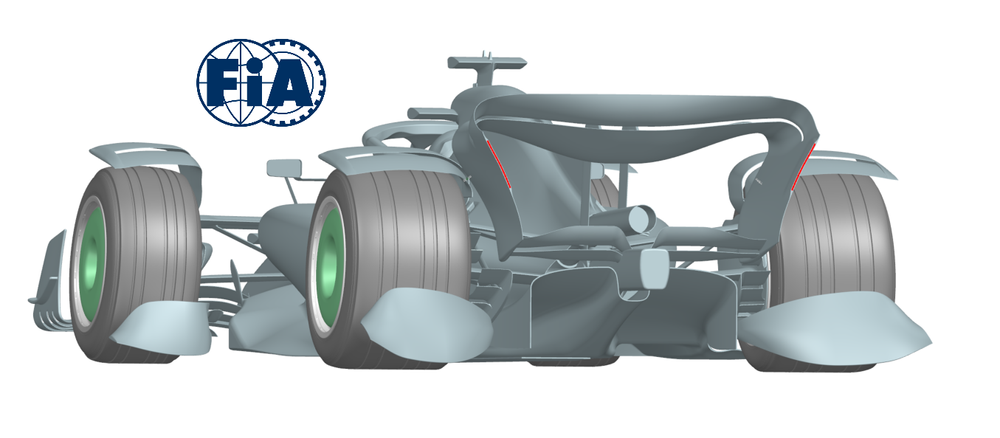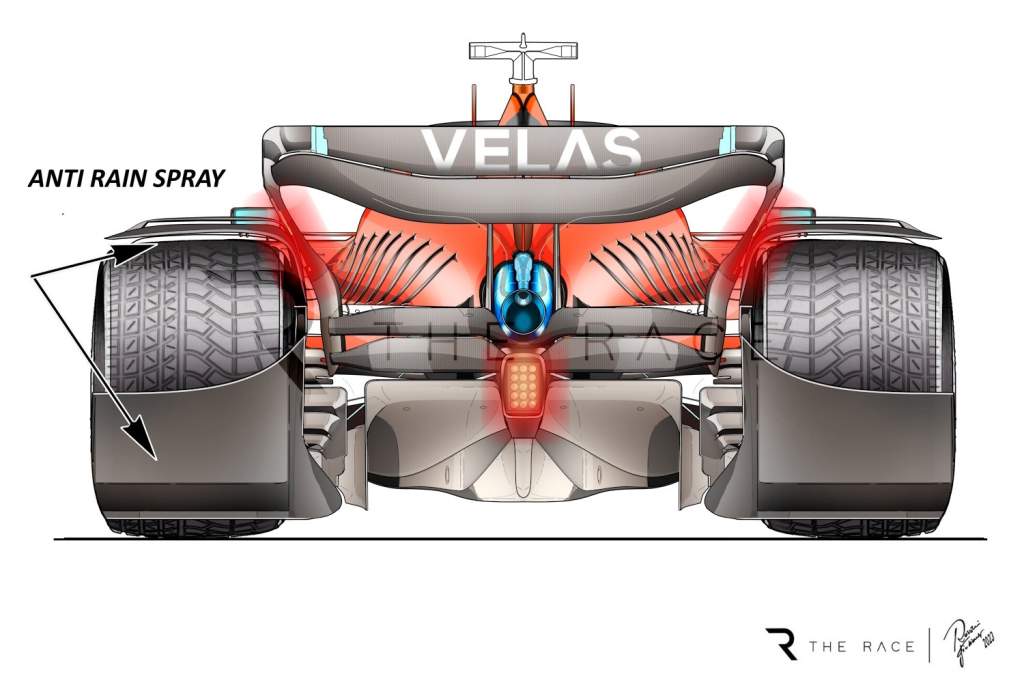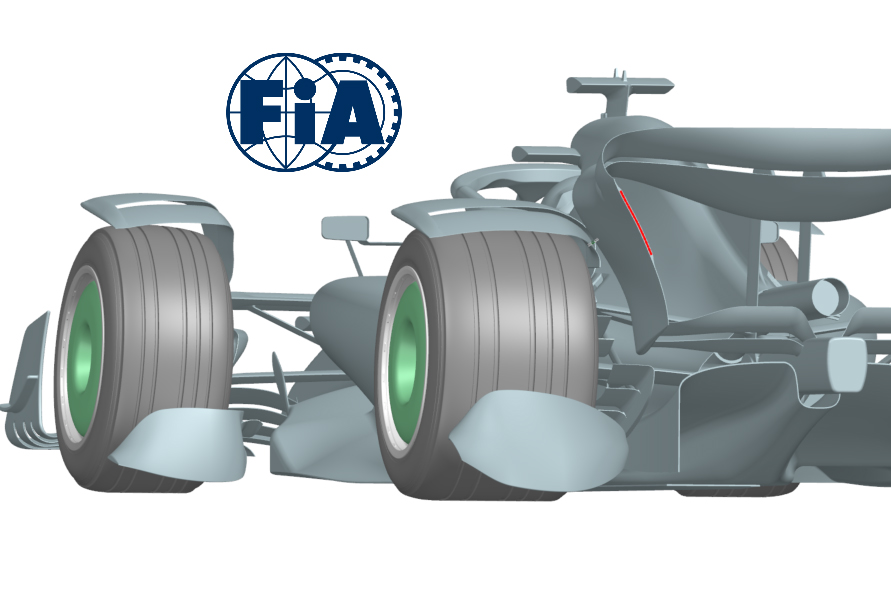Up Next

The FIA is weighing up whether to delay implementing spray guards on Formula 1 cars until new regulations arrive for 2026, or abandoning the project entirely.
Crucial testing of a revised solution for F1’s ‘Wet Weather Package’ was meant to take place in November, but the FIA’s reliance on willing F1 teams, who in turn couldn’t produce necessary parts without reliance on external suppliers, created financial and logistical barriers that mean this test is now delayed until May 2024.
Initial testing of the first iteration at Silverstone in July, with Mick Schumacher driving a Mercedes fitted with spray guards and Oscar Piastri driving a standard McLaren to act as a reference, proved a failure.
The FIA’s Nicolas Tombazis admitted the first guards were “too small” and “didn’t make a tangible difference” to improving visibility.
The project aims to reduce spray by 50%, so this result was disappointing, but the FIA intends to “see what percentage we can cure by complete cover of the wheels,” according to Tombazis. “And then if we see that's actually a tangible step forward, we'll optimise that”.
“What we're testing in May isn't the final solution,” he added. “It's information gathering to see if that is actually the right path.
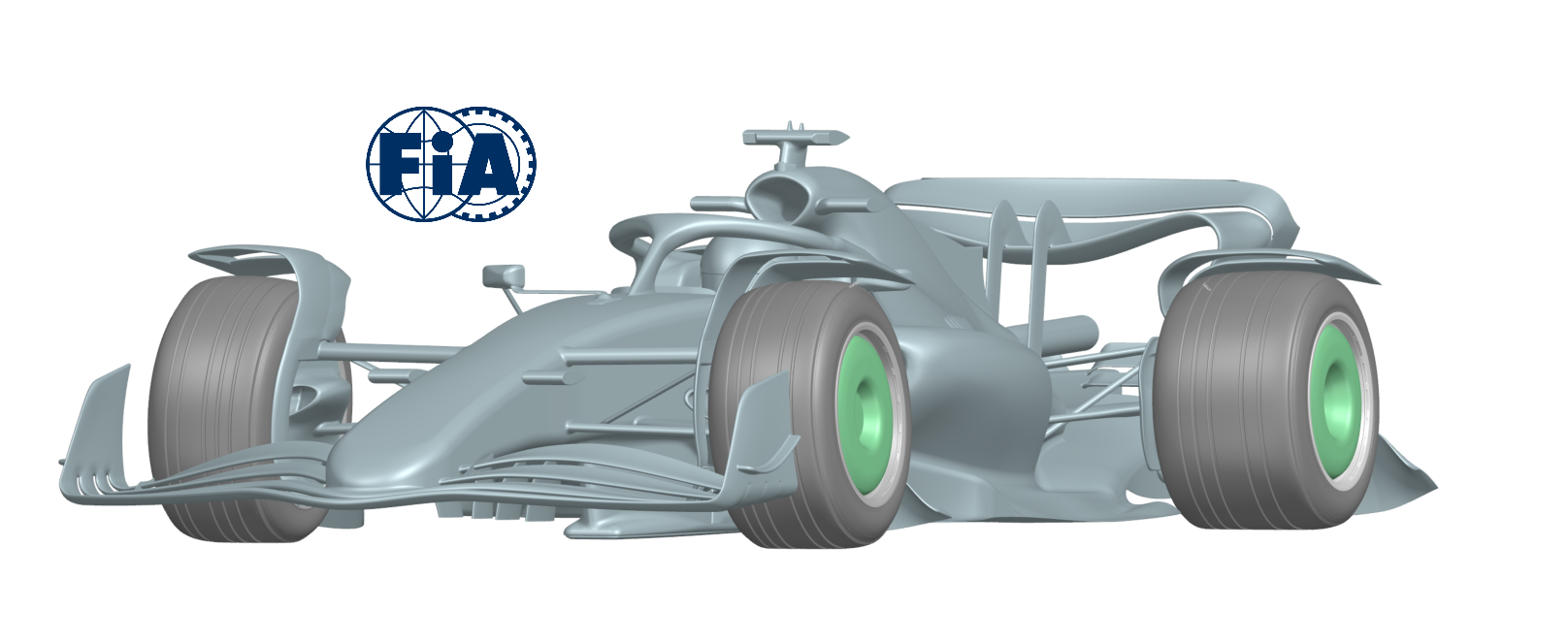
“Things would have to go reasonably well to have it in 2025. If that fails, then it would have to be 2026. It would be part of the new regulations.
“Alternatively, if the test doesn't go well in spring, we may abandon that course and then have to really think about what we do.”
It’s clear the FIA knows it might not be possible to fix the problem, but the hope is that the next iteration might at least make some difference. If testing of iteration two fails then it’s very difficult to see what else the FIA could do.
The ambition of avoiding a repeat of the farcical 2021 Belgian Grand Prix is laudable, but physics are physics and sometimes there is simply nothing you can do to overcome nature.
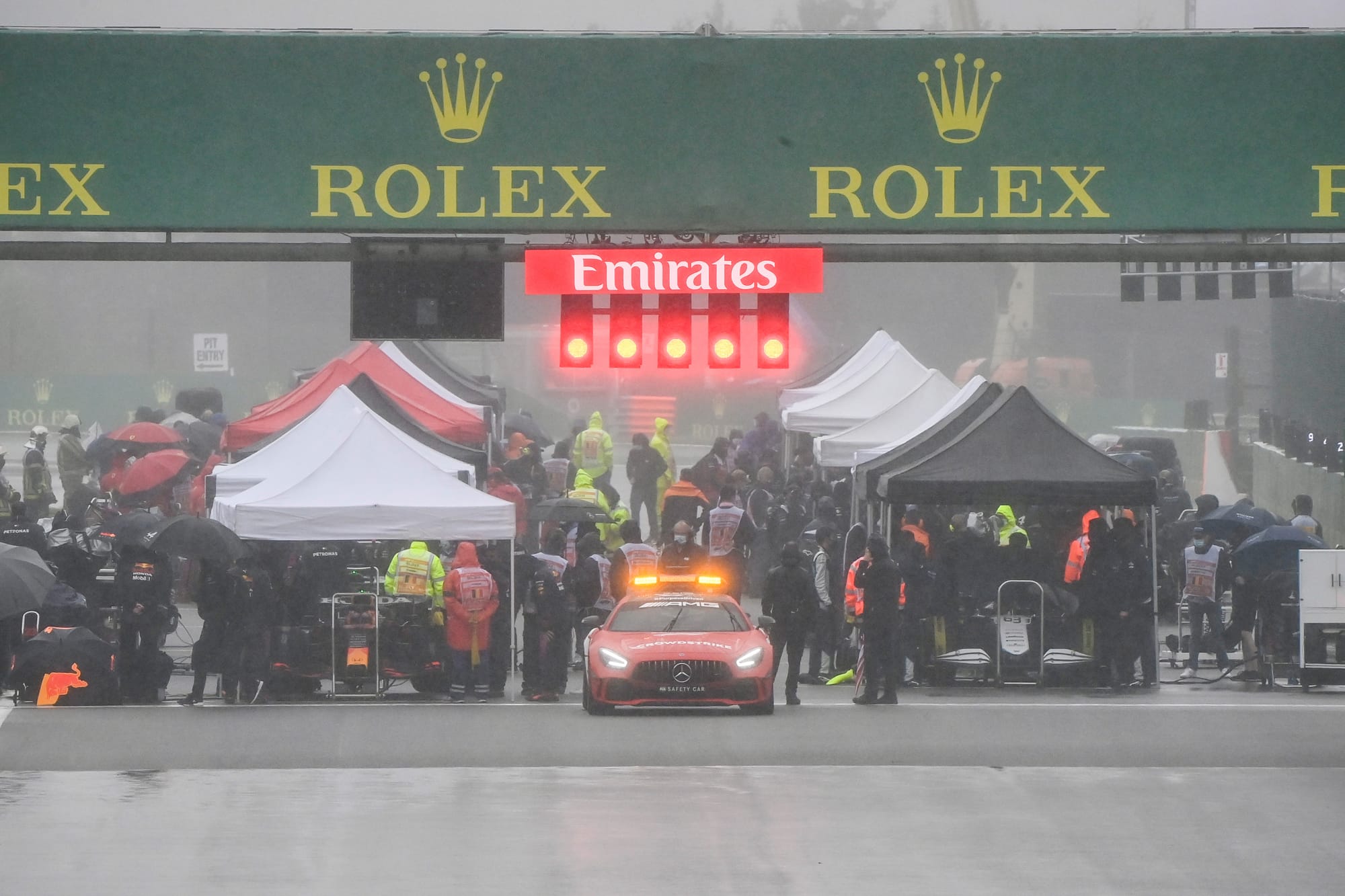
There will always come a point where conditions are unsafe to race, and high-speed, high-downforce single-seaters aren’t the best equipped to deal with poor visibility even in the sort of wet conditions that are normally considered safe to race in.
Tombazis says the FIA “still have a doubt” about how much extra spray is being created by the powerful diffusers on F1’s new ground effect cars. He argues this problem of ‘rooster tails’ was present in the previous generation of cars, so ground effect in itself is not the issue but rather the physical challenge of what to do about a major section of car that is responsible for both grip (necessary) and producing spray (undesirable) in wet weather.
“What we still have a doubt about is what proportion of the problem is due to the overall diffuser and sucking water from the track, which is something clearly this thing won't fix, and how much is because of the wheels,” Tombazis explained.
“We know both factors are quite significant, so we're not aiming to solve everything. We know there will still be visibility issues.”
Mandating a completely different configuration of car for the wet might work, but would create clear logistical and financial problems for the teams. It’s not really feasible to have ‘wet’ and ‘dry’ F1 cars for each grand prix, so whatever solution is proposed needs to be a bolt-on kit - which in itself creates limitations.
“It would be too complicated to do on a set of regulations with cars that have to be in one configuration when it's dry and have to change when it’s wet,” Tombazis said. “That would be probably a bit too complicated.
“If we conclude the main factor is nonetheless the diffuser. First of all, I think that the direction the 2026 regulations are going, probably that would make a step improvement. But secondly, then we would be able to focus some of the work there and see what more we can do.”
So it would seem the FIA is basically relying on the revised 2026 rules to ’naturally’ reduce the diffuser’s effect on wet weather spray, and that this effect will be enough when married to a bolstered spray guard design to significantly reduce the problem.
Creating some kind of physical barrier to spray from the diffuser, by blocking it or stalling it, for example, has been ruled out. It would no doubt reduce the spray problem, but at the expense of grip.
Even the current spray guard designs create an aerodynamic loss, and the FIA is conscious this loss needs to be acceptable to the teams and not create uncontrollable instabilities that make the cars more difficult to drive in the wet.
“It's a bit difficult to put things there and not to lose a humongous amount of downforce,” Tombazis added. “And one of the challenges of these wheel covers has been not to lose too much downforce. There’s a bit of a trade-off.
“If you lose like half the downforce of the car, then the drivers are suddenly faced with a car that has very little grip. Then are you safer or not?”


